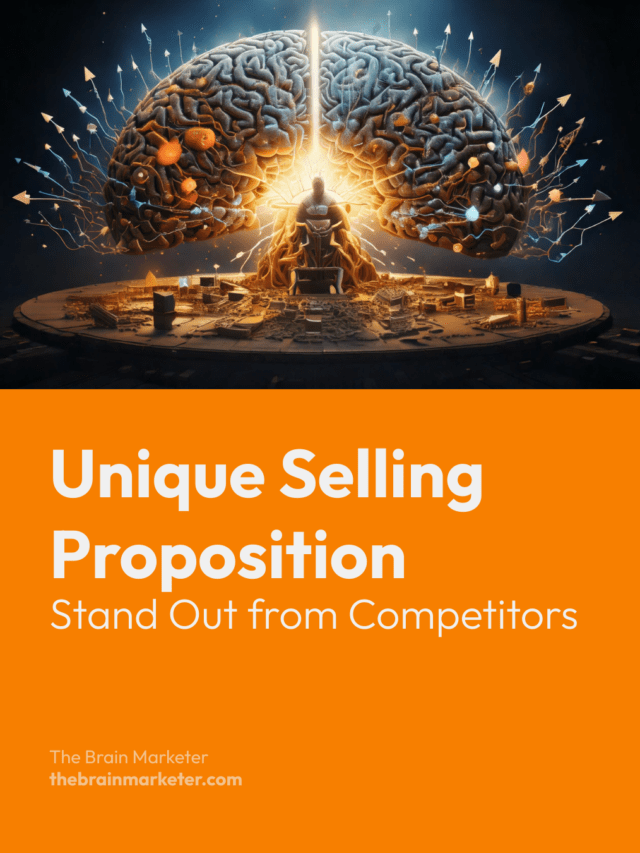Introduction
Standing out from the competition is one of the greatest challenges in marketing. In a crowded marketplace, it is essential to communicate what makes your offer different and why it should be the preferred choice for consumers. This article explores how to define your unique selling proposition (USP), leverage customer psychology, and use effective communication strategies to position your product or service distinctively. By understanding the expectations and needs of your customers, you can craft a compelling message that appeals directly to their desires and solves their frustrations.
🎙️ Unpack the Topic with this Podcast
Understanding Customer Questions About Your Product
When customers evaluate your product, they are looking for clear reasons to choose your offer over others. Understanding the types of questions they ask can help you shape your message effectively.
Typical Customer Questions:
- “What does this offer give me compared to other alternatives?”
- “Does this offer add something more compared to what I usually use (product or service)?”
As a seller, it’s essential to ask yourself:
- “Is my solution the only one capable of solving my customer’s frustration?”
- “Am I the only provider that can meet this specific need?”
Your job is to convince the consumer that your product not only stands out but is also the best solution to their problem. Appealing to the primal brain, which focuses on survival and minimizing discomfort, can be highly effective. For example, using before-and-after scenarios can clearly demonstrate the benefits of your product and how it can alleviate a frustration or solve a problem.
Avoid Generic Communication
One of the key strategies for effective differentiation is to avoid generic language that fails to position your brand as unique.
Phrases to Avoid:
- “We are one of the leading players in the market…“
Instead, say: “We are the only player in the market that…“
The goal is to create a message that highlights your unique position, rather than blending in with competitors.
Four Proof Points to Demonstrate Your Difference
To convince your customers of your value, you need to prove your difference effectively. Here are four types of proof you can use, ranked by their impact on consumer perception.
1. Customer Testimonials
Testimonials from satisfied customers are among the most powerful tools to demonstrate your value. They provide social proof that your product delivers real benefits.
- Effectiveness: 80-100%
- How to Use: Include testimonials that highlight the value of your product, such as specific savings or positive outcomes experienced by a customer.
Example: “Customer Dupont has been using our product for three years and has saved CHF 4,500.“
2. Demonstration
Visual demonstrations can be extremely impactful, especially when addressing the primal brain, which responds well to visuals and concrete evidence.
- Effectiveness: 60-100%
- How to Use: Use comparisons or visual aids to demonstrate the benefits of your product.
Example: “Customer Dupont saves 20 minutes of daily work thanks to our product/service.“
3. Using Comparative Advertising
Comparative advertising is a highly effective strategy to differentiate your brand and stimulate consumer interest by emphasizing the advantages of your product compared to others.
Example of Automotive Advertising
In 2006, automotive brands engaged in a creative advertising battle to highlight their unique strengths:
- BMW: “Congratulations to Audi for winning South Africa Car of the Year 2006. From the Winner of the World Car of the Year 2006.“
- Audi: “Congratulations to BMW for Winning World Car of the Year 2006. From the Winner of Six Consecutive Le Mans 24-Hour Races 2000–2006.“
- Subaru: “Well done to Audi and BMW for winning the beauty contest. From the winner of the 2006 International Engine of the Year.“
Benefits of Comparison in Advertising:
- Stimulates Competition: Encourages brands to innovate and improve.
- Provides Better Consumer Information: Highlights key differentiators that are relevant to consumer needs.
- Fosters Creativity: Pushes brands to develop unique messaging and find original ways to appeal to customers.
4. Using Data to Prove Your Value
While data can be effective, it has less impact on the primal brain, which tends to be more influenced by emotion.
- Effectiveness: 20-60%
- How to Use: Present data in a way that creates a clear contrast between before and after. It can help build credibility when used alongside emotional appeals.
Example: Present data about cost savings, productivity improvements, or other measurable outcomes in a simple, visual way that complements other proof points.
Vision as a Selling Tool
When you don’t have direct proof points like testimonials or data, you can use vision to create an emotional connection with your audience.
- Effectiveness: 10-40%
- How to Use: Share a vision of how your product will change the future for the better, helping your customer envision the advantages of choosing your solution.
Example: One of the best demonstrations of using vision to sell a product was Steve Jobs’ 2007 keynote introducing the iPhone. He presented a vision of a device that would revolutionize communication, entertainment, and productivity, capturing the imagination of millions.
Conclusion
Differentiating your brand from competitors is key to winning the hearts of your customers. By avoiding generic claims and emphasizing your unique selling points through customer testimonials, demonstrations, comparative advertising, and a compelling vision, you can position your brand as the preferred solution. Remember to address the primal brain by using concrete visuals and emotional appeals to effectively reduce consumer frustration and create a memorable experience.

Vincent Heimann is a marketing project manager and neuromarketing enthusiast. He founded The Brain Marketer to bridge neuroscience and marketing through accessible, science-based content. With over 10 years of experience in digital strategy, UX/UI and communication, he shares practical insights to help brands connect with the human brain — ethically and effectively

